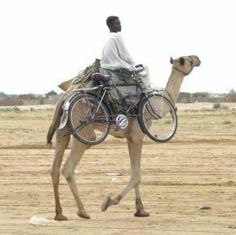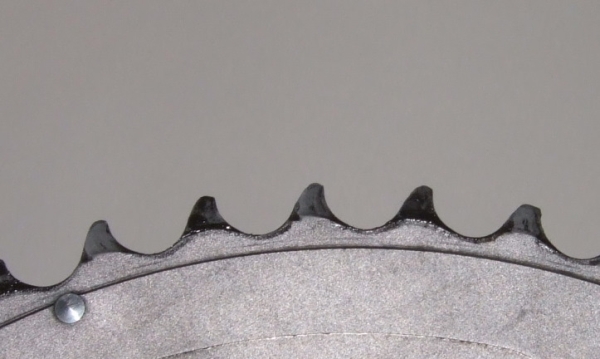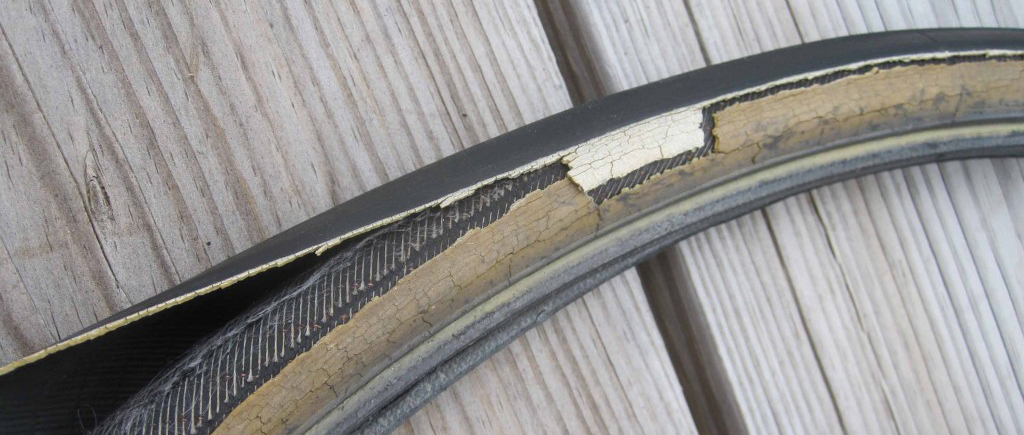 TODAY – We will get you on a bike. I dunno how that will be possible through the internet, but it sounds like the right thing to say.
TODAY – We will get you on a bike. I dunno how that will be possible through the internet, but it sounds like the right thing to say.
More realistically, what we will do is to give you a checklist if you are ever looking at a used bike, say, off Craigslist.
Long story short: Rust is really bad, wrecked wheels and tires are really bad, a clean bike is really good, and things generally shouldn’t wobble, squeak, or rattle at all. More in-depth suggestions below!
Look at it:
- Rust
- Any rust means that the bike was not cared for very well at all, and usually that it was stored outside.
- Small specks of rust on chrome and steel are repairable with some elbow grease.
- Large patches of rust, usually on the wheels, are sort of a death sentence for the bike, or at least for the part in question.

- Cracks & Dents
- Any cracks or dents in the frame usually means that the bike is trash.
- At best a bike that has a dent or crack in it could be stripped for parts.
- Chain condition, Crank condition
- The chain should be relatively tight, and ideally fairly clean.
- It is extremely rare that anyone EVER cleans their chain, so if the chain is pretty clean that is a pretty great sign.
- If the front cogs are incredibly dirty, it probably means that they never ever cleaned their bike. Kind of a red flag.
- The other thing to look for is whether the cog teeth are worn. They are worn if they look like fins or shark teeth instead of like triangles:

- The other thing to look for is whether the cog teeth are worn. They are worn if they look like fins or shark teeth instead of like triangles:
- The chain should be relatively tight, and ideally fairly clean.
- Seat and handlebar condition
- The handlebar wraps or grips are almost always torn up or so dirty as to be unusable on used bikes.
- Same goes for the seat.
- Replacing either will be a minimum of $20 per, so work that into the total cost.
- Tire condition
- The #1 thing that people underestimate the cost of replacing.
- Tires that are cracked, even a little, are unsafe to ride on.
- Tires that are flaking are subject to explode when inflating.
- Replacing both tires on a bike will cost a minimum of $60, not to mention tubes, which will add another $20. Figure $80 if the tires are in really bad shape.

- Wheel size
- Certain sizes of wheel will be much easier and cheaper to find tires for.
- 26″
- 700c
- The best way to find wheel size will be on the TIRE, not on the wheel itself.
- Most vintage road bikes will have 27″ wheels, which aren’t terribly problematic, just not as easy to find tires for.
- Certain sizes of wheel will be much easier and cheaper to find tires for.
Mess with it:
- Spin both wheels
- First just see how long they spin for, the longer the better.
- If it doesn’t spin barely at all, there might be some serious work that needs to be done to the wheel.
- If they are spinning freely, look closely at the brakes while they are rotating, see if the wheel wobbles at all in relation to the brake pads. If it does, the wheel is out of true.
- First just see how long they spin for, the longer the better.
- Stop the wheels, wobble them back and forth by hand.
- Look for any slight movement side to side. We are talking like a millimeter.
- If it feels loose AT ALL, either:
- It is seated incorrectly in the frame, in which case you can just try to re-seat it.
- OR, the bearings in the wheel are shot, and need to be replaced.
- Turn the pedals
- Make sure that the crank moves freely.
- Wobble the crank arms from side to side, there should be NO movement at all. Same deal as with the wheels.
- Try to wobble the crank arms specifically, sometimes there can be a bit of looseness in cheaper pedals, that isn’t necessarily a big deal.
- If there is movement side to side, that almost definitely means that the bottom bracket is shot, and would need to be replaced.
- Hit the brakes
- Ideally, there will be no squishiness at all.
- The brake levers should not need to travel very far in order to put a LOT of pressure on the wheels
Ride it:
- Shift through all rear gears, then leave it in the middle.
- Shift through all front gears, then leave it in the middle.
- Get up some speed, and apply the brakes softly – listen for squealing and feel for any bumpiness in braking.
- Apply the brakes hard (not TOO hard) just to make sure they have good stopping power.
Other things of note:
- Look for quick releases. They will be approximately a million times easier to deal with.
- Check to see how well the kickstand works, if it has one.
- Take a measurement.
kickstands are for plebs